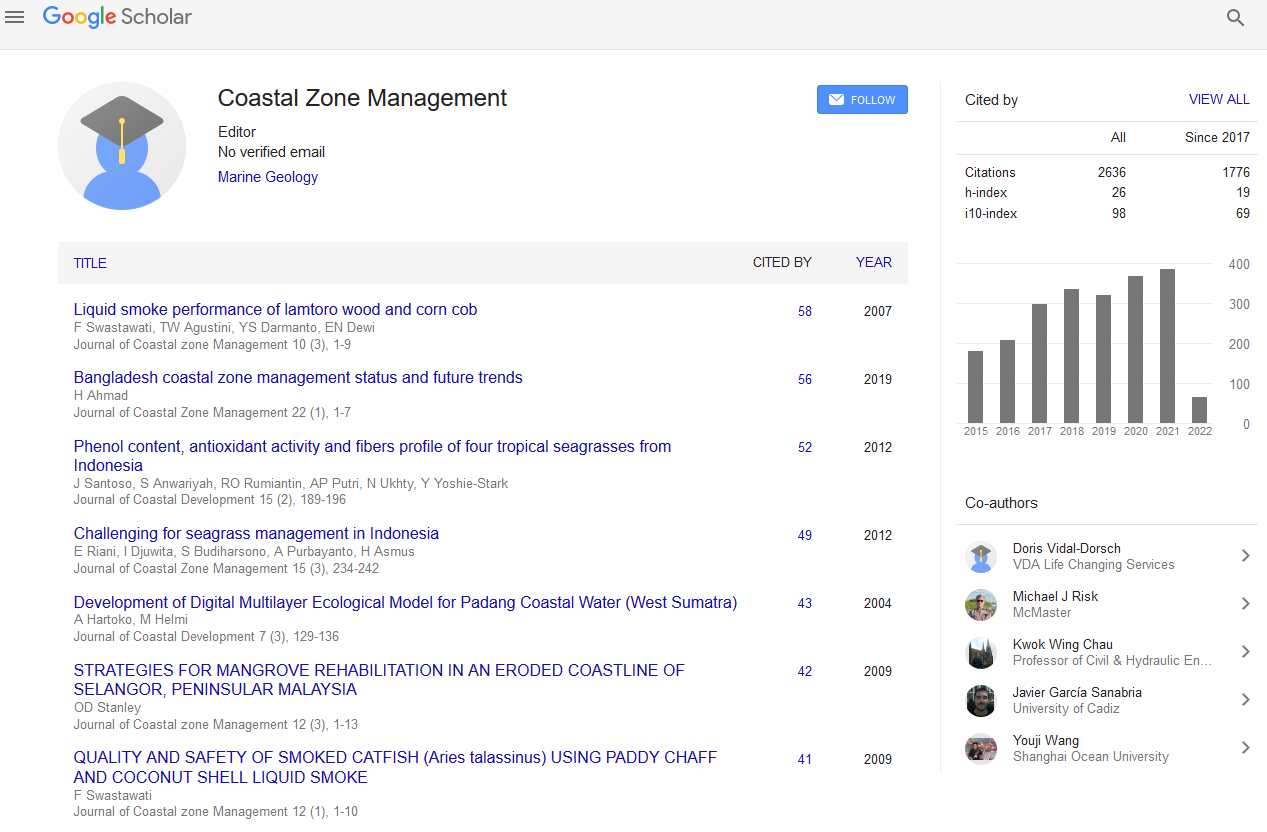Indexed In
- SafetyLit
- RefSeek
- Hamdard University
- EBSCO A-Z
- OCLC- WorldCat
- Publons
Useful Links
Share This Page
Journal Flyer

Open Access Journals
- Agri and Aquaculture
- Biochemistry
- Bioinformatics & Systems Biology
- Business & Management
- Chemistry
- Clinical Sciences
- Engineering
- Food & Nutrition
- General Science
- Genetics & Molecular Biology
- Immunology & Microbiology
- Medical Sciences
- Neuroscience & Psychology
- Nursing & Health Care
- Pharmaceutical Sciences
Evaluation of contamination of River Niger by persistent organic pollutants (POPs) using sediment quality guidelines (SQGs)
2nd International Conference on Coastal Zones
July 17-18, 2017 Melbourne, Australia
John Paul Unyimadu
Nigerian Institute for Oceanography and Marine Research, Nigeria
Posters & Accepted Abstracts: J Coast Zone Manag
Abstract:
The consensus-based Sediment Quality Guidelines (SQGs) were critically evaluated to determine if they would provide effective tools for assessing sediment quality conditions in fresh and brackish water ecosystems in River Niger, Nigeria, contaminated with Persistent Organic Pollutants (POPs). Sediment Quality Guidelines have been used in numerous applications, including designing monitoring programs, interpreting historical data, evaluating the need for comprehensive sediment quality assessment and ecological risk assessments. Fifteen (15) representative sites along River Niger, three each from Gurara River (tributary) in Niger State, Lokoja (confluence) in Kogi State, Onitsha in Anambra State, Brass and Nicolas River (brackish tributaries) in Bayelsa were purposefully selected for sampling over a 24-month period. The samples were analyzed using a gas chromatograph, HP 5890 series 11 with dual column and ECD detector. Sediment toxicity should be observed only rarely below the threshold effect concentration (TEC) and should be observed more frequently above the probable effect concentration (PEC). The mean Polychlorinated Biphenyl ΣPCB range of 688-2964 μg/kg dry wt. exceeded the TEC and PEC sediment quality guidelines of 59.8 and 676 μg/kg dry wt. in all the locations. For organochlorine pesticides the SQGs were exceeded in all locations for chlordane (cis and trans chlordane), dichlorodiphenyldichloroethylene (DDE) and Lindane, sometimes 3-5 folds. The exceedance of screening values is an indicator of potential toxicity of River Niger sediments to benthic fauna. The results of this evaluation have provided reliable bases for classifying the entire sediment of River Niger as toxic. More site specific monitoring and intensive evaluation of benthic health risk in this River should be conducted.
Biography :
Email: jpcnu@yahoo.com

